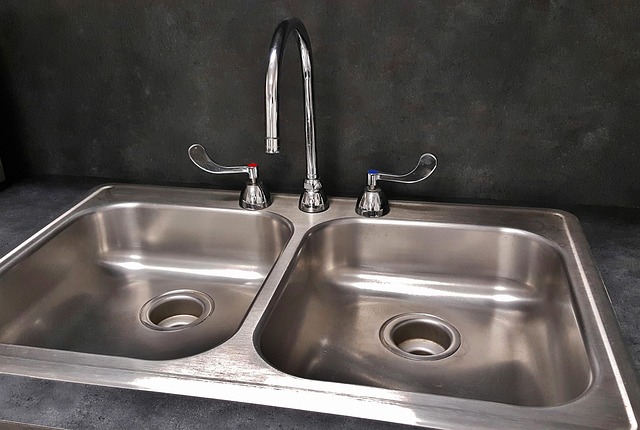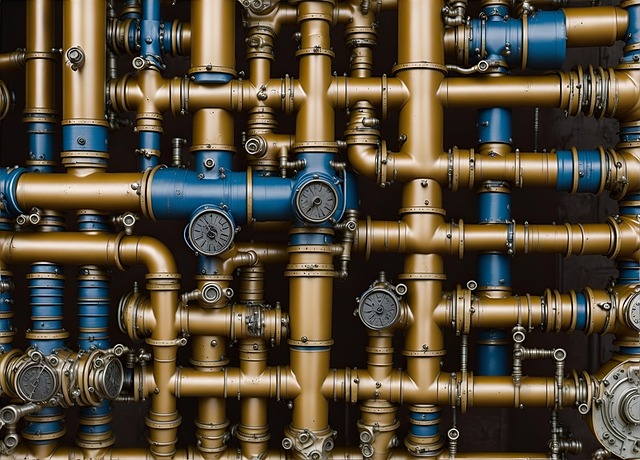Bathroom plumbing leaks are common issues caused by faulty fixtures, worn-out connections, or outdated sealing mechanisms. Early identification of symptoms like wet spots, increased water bills, dripping sounds, and mildew odors is crucial for preventing significant damage and high repair costs. Temporary fixes can be implemented to mitigate damage until a professional arrives. Choosing the right plumber with expertise in complex bathroom leak repairs and modern sealing technologies ensures efficient solutions and long-term protection. Regular monthly inspections, part replacements, and monitoring of water pressure and common leak areas are essential for maintaining bathroom plumbing integrity.
Tired of that persistent dripping? Understanding common bathroom leak causes is the first step to fixing it. From worn-out valves to cracked pipes, identifying symptoms like a wet floor or running toilet can help you take action. Before calling a professional plumber, follow our simple temporary fix steps. We’ll also guide you in choosing the right expert and exploring modern plumbing solutions for lasting relief. Plus, learn preventive measures to avoid future leaks and keep your bathroom plumbing in tip-top shape.
Understanding Common Bathroom Leak Causes

Leaks in bathrooms are a common issue, often stemming from various sources within the complex plumbing system. Understanding the root causes is the first step in effective leak repair. One of the primary reasons for bathroom leaks is faulty fixtures or components, such as showerheads, faucets, and toilet tanks. Over time, these parts can wear out, leading to drips and steady water flow that goes unnoticed until a full-blown leak occurs.
Another prevalent cause is related to plumbing connections and joints. Bathroom pipes undergo constant pressure and movement, causing these connections to weaken or crack, resulting in leaks. Additionally, outdated or improperly installed bathroom fixtures might not have the necessary sealing mechanisms, leading to seepage. Awareness of these common issues equips homeowners to address them promptly, preventing minor inconveniences from turning into major water damage problems.
Identifying Leak Symptoms in Your Bathroom

Leak repair in bathrooms is a common issue that can often go unnoticed until significant damage has occurred. Identifying leak symptoms early on is crucial for effective bathroom plumbing maintenance. One of the most obvious signs is a persistent, mysterious wet spot on your floor or wall. This could indicate a leak from a faucet, showerhead, or even a hidden pipe. Over time, you may notice an increase in your water bills with no apparent reason, which can be a red flag for an unseen leak.
Another common symptom is the sound of dripping water, especially at night or when the bathroom is unoccupied. You might also smell moisture or mildew, as these are clear indicators of persistent leaks. By being vigilant and checking for these signs regularly, you can take proactive measures to prevent extensive damage and high repair costs associated with neglected bathroom plumbing issues.
Steps to Temporary Fix Before Professional Help

If a bathroom leak occurs and you’re unable to contact a professional immediately, there are some temporary fixes you can implement to prevent further damage. Start by locating the source of the leak; it could be a faulty toilet flapper, a worn-out shower seal, or a pipe connection issue. Once identified, turn off the water supply to the affected area using the shut-off valves beneath the sink or at the water heater. This step is crucial to prevent the leak from causing significant water damage.
Next, for a temporary fix, you can use materials readily available in your home. For instance, place a bucket under the leak and use tape or a cloth to plug any visible gaps. If it’s a toilet leak, you might be able to replace the flapper. For shower leaks, consider using caulk or silicone to seal any cracks around the showerhead or bathtub. Remember, these are only short-term solutions, and professional bathroom plumbing help should be sought as soon as possible to address the issue thoroughly and prevent future leaks.
Choosing the Right Plumber for Efficient Repair

When it comes to bathroom plumbing repairs, especially leaks, choosing the right plumber is paramount. Look for professionals who specialise in complex bathroom leak repair, as they will have the expertise and tools needed to address any issue, from pipe corrosion to faulty fixtures. Experience counts; a seasoned plumber will be able to diagnose problems quickly and offer efficient solutions tailored to your specific situation.
Reputable plumbers often provide comprehensive services, ensuring not just leak repair but also maintenance and prevention strategies. They might offer advice on improving bathroom plumbing efficiency, such as installing water-saving fixtures or recommending materials resistant to common causes of leaks. This holistic approach ensures that not only is the current leak fixed, but future problems are minimised, promoting long-term cost savings and preventing further disruptions.
Modern Plumbing Solutions for Long-Lasting Relief

Modern plumbing solutions offer long-lasting relief for bathroom leaks, ensuring your space remains dry and damage-free. One innovative approach is the use of advanced sealing technologies that create an impenetrable barrier around leak points. These solutions are particularly effective for stubborn leaks behind walls or under floors, where traditional repairs often fall short.
Additionally, modern fixtures and fittings are designed with built-in leak prevention mechanisms. From pressure balance valves to advanced showerheads, these features help minimize the risk of water damage by regulating water pressure and flow. Integrating such technologies into your bathroom plumbing can significantly extend the lifespan of your space, offering both convenience and peace of mind in the event of unforeseen leaks.
Preventive Measures to Avoid Future Leaks

Regular maintenance is key to preventing future bathroom leaks and ensuring your plumbing stays in top condition. Start by inspecting all fixtures, pipes, and fittings for any signs of damage or wear and tear on a monthly basis. Even minor cracks or corrosion can be potential leak points, so addressing them promptly is essential.
Consider replacing old or damaged parts with new, water-efficient models to reduce the risk. Additionally, keep an eye on your water pressure; both too much and too little can cause leaks. Regularly check for leaks around toilets, sinks, and showers, as these areas are common culprits. Simple preventative measures like sealing gaps and using waterproof caulk can go a long way in maintaining the integrity of your bathroom plumbing.
